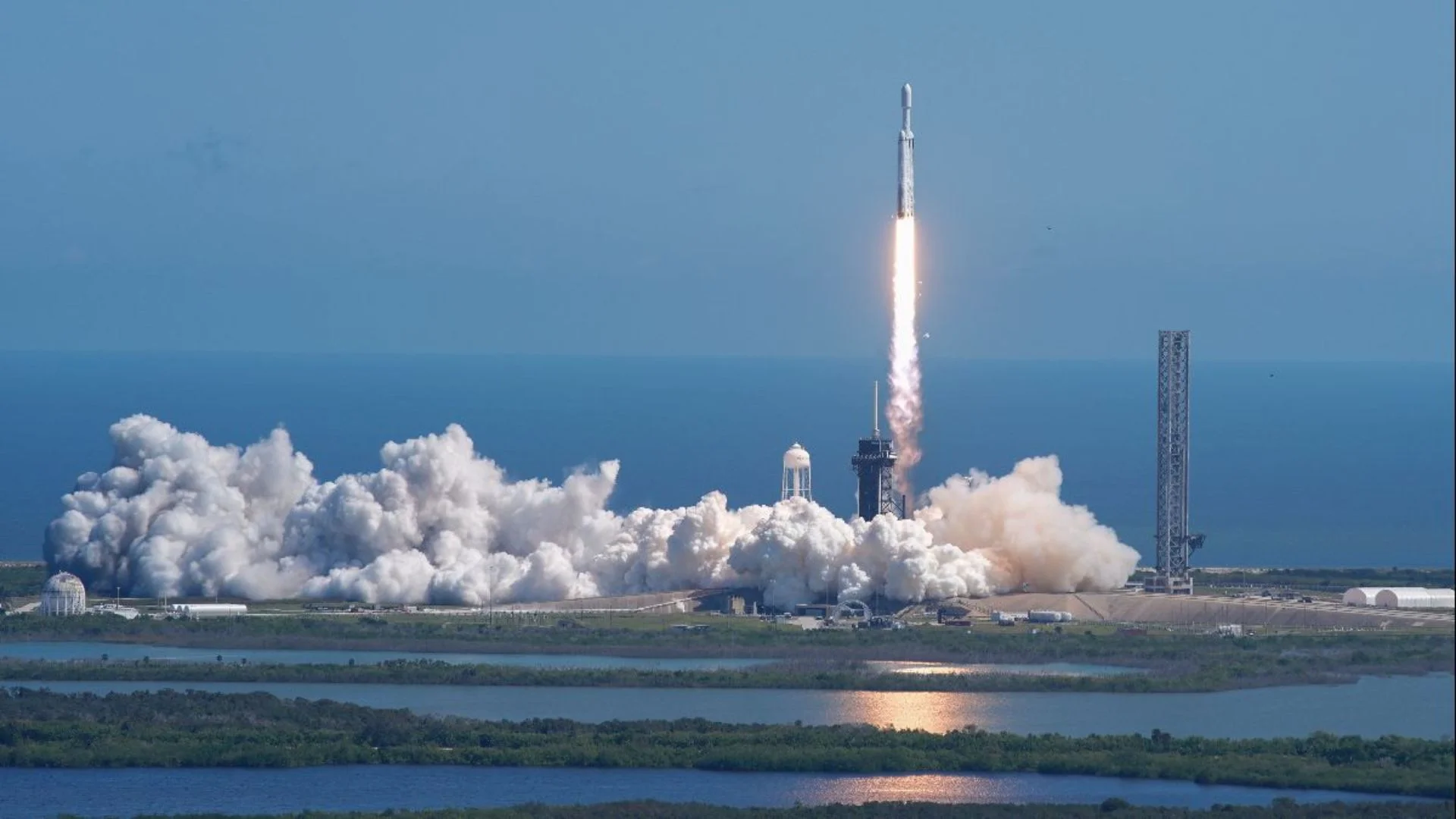
NASA successfully launched its Europa Clipper spacecraft from Florida on Monday, embarking on a mission to explore whether Jupiter’s moon Europa possesses conditions suitable for life. The focus is on the large subsurface ocean believed to lie beneath Europa’s thick icy shell.
The spacecraft lifted off from the Kennedy Space Center in Cape Canaveral aboard a SpaceX Falcon Heavy rocket, soaring under clear skies. After a journey of approximately 1.8 billion miles (2.9 billion kilometers), the robotic solar-powered probe is expected to enter orbit around Jupiter in 2030. The launch was initially scheduled for last week but was delayed due to Hurricane Milton.
Measuring around 100 feet (30.5 meters) in length and 58 feet (17.6 meters) wide with its antennas and solar arrays fully deployed, Europa Clipper is NASA’s largest spacecraft designed for a planetary mission, surpassing the size of a basketball court and weighing roughly 13,000 pounds (6,000 kilograms).
Europa is the fourth-largest of Jupiter’s 95 recognized moons and, despite being only a quarter of Earth’s diameter, it is believed to harbor a vast global ocean of salty liquid water, potentially containing twice the volume of water found in Earth’s oceans. Scientists regard Earth’s oceans as the cradle of life, which enhances Europa’s significance as a potential habitat for extraterrestrial life.
NASA Associate Administrator Jim Free highlighted Europa’s environment as one of the most promising for habitability within our solar system, although he clarified that the mission is not intended to search for actual living organisms. “What we discover on Europa will have profound implications for the study of astrobiology and how we view our place in the universe,” he stated.
The mission aims to measure the internal ocean and its overlying ice layer, map the moon’s surface composition, and search for plumes of water vapor that may be escaping from the icy crust. Starting in 2031, Europa Clipper will conduct 49 close flybys of Europa over three years, approaching as near as 16 miles (25 kilometers) to the moon’s surface.
Given that Europa operates within an intense radiation environment around Jupiter, NASA has designed a protective vault made of titanium and aluminum inside the spacecraft to shield its sensitive electronics from the planet’s strong magnetic field, which is about 20,000 times more powerful than that of Earth.
To reach Jupiter, Europa Clipper will not follow a direct route; it will first fly by Mars and then return to Earth, utilizing the gravity of each planet to boost its momentum like a slingshot. The spacecraft is equipped with more than 6,060 pounds (2,750 kilograms) of propellant to assist in its journey, and its solar arrays will provide power to its nine scientific instruments and other systems.















